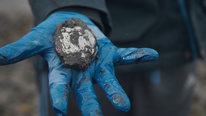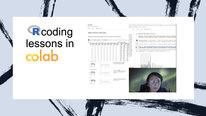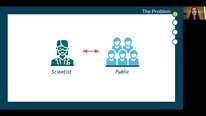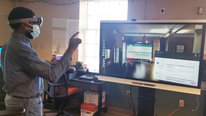- Nancy Songer
- https://education.utah.edu/about/dean-bio.php
- Dean College of Education
- Life Right Here and Everywhere: Case Studies of a Suite of NGSS Materials Implemented in Diverse Settings
- https://lrhe.utah.edu/
- University of Utah
- Tamara Galoyan
- https://lrhe.utah.edu/
- Postdoctoral Scholar
- Life Right Here and Everywhere: Case Studies of a Suite of NGSS Materials Implemented in Diverse Settings
- https://lrhe.utah.edu/
- University of Utah
- Michelle Newstadt
- Senior Director of Research and Innovation
- Life Right Here and Everywhere: Case Studies of a Suite of NGSS Materials Implemented in Diverse Settings
- https://lrhe.utah.edu/
- gooru.org
- Kirby Whittington
- Postdoctoral Researcher
- Life Right Here and Everywhere: Case Studies of a Suite of NGSS Materials Implemented in Diverse Settings
- https://lrhe.utah.edu/
- gooru.org
Public Discussion
Continue the discussion of this presentation on the Multiplex. Go to Multiplex










Tamara Galoyan
Postdoctoral Scholar
Greetings! We hope you enjoy watching our iMovie! After completing our project, one student described the work in the following way, “We went through the lessons by conversating and figuring out solutions from what we learned. For me, it felt very student-led.”
After you watch our iMovie, we are curious to know your thoughts about the following questions:
- How do you support student-led conversations?
- How do you integrate engineering practices in a science classroom?
Nicole Freidenfelds
Cool project! I really like that you included testimonials from your students, and I love the term "eco-solutioning."
Nancy Songer
Dean College of Education
Thanks, Nicole! Aren't our kids great? Coming up with names is super tricky and not something in our job descriptions as Science Educators so we are pleased that you like it! Thanks for stopping by.
Calli Shekell
I enjoyed learning about your work. I'm wondering about this part of your description: "learning is used towards local environmental solutions such as increasing local populations." Does your project provide a specific framework such that other teachers could adapt it for their localities? And, what are you thinking about next given your findings?
Nancy Songer
Dean College of Education
Hi Calli! Thanks for your question. Yes, we have developed a learning approach called "eco-solutioning" that guides students in extending their 3D science knowledge through the design of solutions to local environmental problems, such as how to manage local invasive species. We are developing a research paper that outlines the 5 steps of our learning approach that is modeled after the 5Es. The steps are Engage, Explore, Explain, Engineer, Inform. We'd love to send you a copy and get your thoughts once the paper is complete. Next, we are implementing the unit this summer and next fall and conducting research studies on student learning and teacher interaction. Thanks again for your questions!
Calli Shekell
Thanks, Nancy. I'd love to check out your paper once it's ready. I'm also looking forward to learning about the results you find in the coming year.
Perrin Chick
Thank you for the work you are doing. This topic is close to my heart and I love how much voice you are giving the youth.
Perrin
Tamara Galoyan
Postdoctoral Scholar
Thank you so much for your comment, Perrin! We really aimed for our project to be driven by the interests and needs of our youth and their local communities. Our eco-solutioning learning approach helps learners take charge of their own learning while addressing local environmental issues.
Marcia Linn
Hi Nancy! It's great to learn about the exciting work you are doing. Love the butterfly. Your video is thought provoking. We share your interest in making science more accessible and understandable. See our work exploring the ways teachers use data while teaching for social justice in science--including helping students interpret scientific data. Enjoy, Marcia
Kirby Whittington
Postdoctoral Researcher
Hi Marcia, I just watched your team's video. It seems like there are many connections between our work. We are also working with an online learning environment called Gooru. The online learning environment has been fascinating to work within as it has allowed the students and teachers to more comprehensively track their learning. I am excited to hear more about the system you all use to separate out student learning on the three-dimensions.
Heidi Carlone
Distinguished Professor
Hi Nancy and team,
"Life right here and everywhere"-- Yes! I love this. I'm intrigued by the "right here and everywhere" tagline b/c it highlights the local/global connections, which is really quite lovely and powerful. I appreciated the prominence of students' voices in this summary of your work.
I'm wondering about how well this work translated during the pandemic shift. What is the nature of youths' connection to the natural world when the educational learning experience is virtual? Are there particular affordances of your virtual Gooru environment? I'd love to hear more about that platform.
I also wondered about your research questions. What are you most interested in learning?
Thanks for sharing this great work!
Kirby Whittington
Postdoctoral Researcher
Thanks! While the transition to the fully virtual environment was challenging the curriculum built-in having students make observations throughout the lessons. We kept this component during the virtual setting but had students make observations in their backyard or if they went on a walk. Students then took pictures of what they saw brought them to class to discuss. The observations were less structured than originally planned but students were able to view what was around them. I think because of the focus on the local environment the transition to virtual learning allowed us to give a little more autonomy to students.
Many of the affordances of the platform revolve around the teacher and what feedback they are able to give students and when. The platform is considered a Data Backbone so it allows the teacher to view progress, give feedback, and see evidence of student learning around the curriculum to make informed decisions. This is something we are in the process of integrating more into the curriculum and working with teachers around student learning data.
I am sure others in the team will have different responses, but one of the things I am very interested in understanding the connection that engineering design can have not only on student learning but on students' science identity and interest in science (especially for underserved groups). I am also curious how the curriculum can change teachers' understanding of engineering design.
Heidi Carlone
Nancy Songer
Dean College of Education
Hi Heidi! It's great to see you here! I am responding to this question you posed: I also wondered about your research questions. What are you most interested in learning?
We have three areas of focus for our research studies:
1. (qualitative studies) What is the process of co-construction of interactive instructional and professional development materials that promote an NGSS and eco-solutioning learning approach?
2. How do teachers utilize the online, data-backbone instructional materials for productive and more customized feedback, coaching, and learning of NGSS eco-solutioning knowledge?
3. (qualitative case studies) What evidence of NGSS learning and the design of local solutions do students demonstrate within and across diverse middle school settings in association with NGSS eco-solutioning instructional materials?
Heidi Carlone
Daniel Damelin
Senior Scientist
Given the fantastic student testimonials in this video it seems like it really engaged students. Beyond a focus on a relevant eco-situation problem, what components of the program do you think most contributed to the level of engagement you observed?
Kirby Whittington
Postdoctoral Researcher
Even within the virtual environment, students were asked to make observations and discuss them later. The switch to focusing specifically on the lanternfly, which is a local invasive insect, came from one of these observations that students make. Seeing how excited students got around a picture of a lanternfly, we modified the rest of the curriculum to focus specifically on this area of interest. I believe bringing in the student's own observations to tailor the curriculum allowed for this level of engagement throughout.
The other thing I would add is that the teacher who implemented the curriculum created an environment of curiosity and engagement throughout every class session. We might have had very different levels of engagement had we implemented in another classroom. The classroom culture she had set up with students, positioned both herself and the students as learners and scientists throughout the unit.
Dr. Julia V. Clark
Retired Federal Employee
Having students participate in science activities that are unique to their communities make learning authentic and relevant. In this project students develop a plan to educate themselves about their community. This is good, however, I am interested in knowing how the overall project will be evaluated.
Nancy Songer
Dean College of Education
Thanks for your question, Dr. Clark. The overall project will be evaluated through three kinds of research studies that are centered in three areas: a) what are the steps to create transdisciplinary and interactive NGSS eco-solutioning instructional materials, b) how do teachers use the interactive data backbone learning system to guide student learning, and c) what do students learn relative to NGSS standards and across different classroom-based settings? We also have an external Advisory Board that provides guidance on research design, implementation, data collection and analysis, and overall project evaluation.
Brian Drayton
Great project! It is so important that students connect with their world, that is, the part of the world they inhabit — there's so much going on everywhere.
I am curious if the students include some reporting to, or informing, the community about their projects, so that their families and neighbors benefit from the students' new insights.
Nancy Songer
Dean College of Education
Thanks for your great question, Brian. Starting with our fall 2021 implementation, we hope and expect that students can end the unit by presenting guidelines for managing invasive species that they have learned in the unit to family members and local stakeholders, including city planners. In a previously-funded NSF project, students' presentation to families and city planners was the cumulative part of the unit and a very important motivational summary activity for the students and teachers, as well as the community organizers. We are happy to report on this piece of our work in the winter or spring once we have implemented the full unit.
Jeremy Roschelle
Love that violin music -- and the title of the video grabbed me too. And nice to bump into you, Nancy! love the kid testimonials -- put a smile on my face.
Eric Hamilton
Lol. I was about to make a comment about the violin snips in the video - catchy and engaging. Of course, much of our family fortune has gone into violins, violin lessons, violin degrees, etc. over the years. Liked hearing both from teachers and students. "Life right here and everywhere" ~ excellent, Dr Songer and team.
Nancy Songer
Dean College of Education
Great to see both of you here too! Thought one of you might also recognize the song as "Flight of the Bumblebee" since our kids are studying insects.. Best wishes to you both. Give me a holler if you're interested in skiing Utah powder!